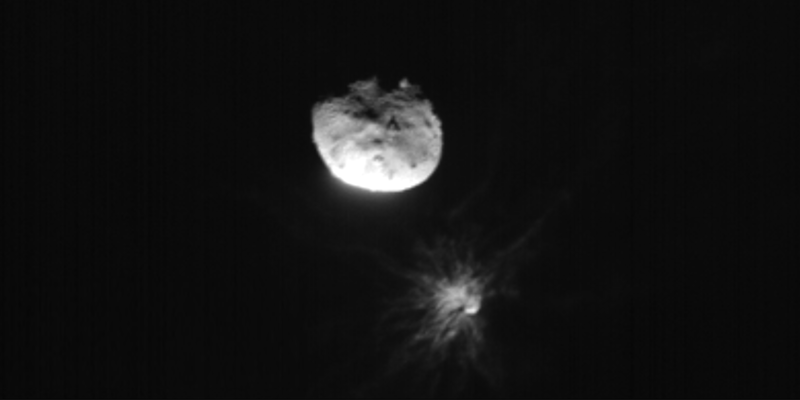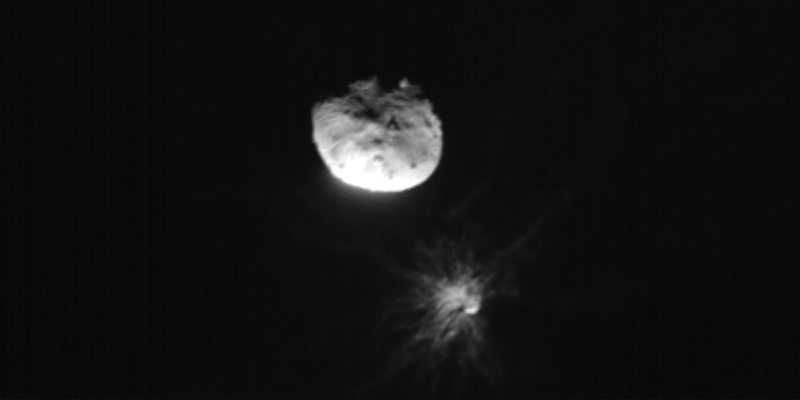Spacecraft Crash Changes Asteroid Orbit by 32 Minutes
A trial run at planetary defense has proven successful. NASA released data yesterday showing that the DART mission was able to change the trajectory of a 160-m-wide asteroid, causing a 4% shift in the object’s orbital motion. “For the first time ever, humanity has changed the orbit of a planetary body,” said director of NASA’s Planetary Science Division Lori Glaze in a press conference at which the results were announced.
On September 26, the refrigerator-sized DART spacecraft intentionally collided with the asteroid Dimorphos at a speed of 14,000 mph (22,000 km/h). Since then, astronomers have kept a close watch on the asteroid to spot any change in its orbit around a nearby asteroid. The newly released data shows that Dimorphos’ orbital period has shortened by 32 minutes—with the asteroid now taking 11 hours and 23 minutes to complete a revolution. This timing change is 25 times greater than the minimum bar that NASA scientists set for themselves as a successful deflection (see Research News: Countdown to DART Impact). “This is a watershed moment for planetary defense and a watershed moment for humanity,” said NASA Administrator Bill Nelson.
The scientists at the press conference all shared their excitement that the orbit shift was successful, but they note that more work lies ahead. “This result is one important step toward understanding the full effect of DART’s impact with its target asteroid,” Glaze said. Ongoing studies will better determine the shape and mass of Dimorphos, as well as reveal details of its new orbit. Scientists hope to eventually know the amount of momentum transferred to the asteroid during the collision. “As new data come in each day, astronomers will be able to better assess whether, and how, a mission like DART could be used in the future to help protect Earth from a collision with an asteroid if we ever discover one headed our way,” Glaze said.
Correction (14 October 2022): A previous version incorrectly stated that the collision slowed down the orbital period. In fact, the orbital period became shorter.
–Michael Schirber
Michael Schirber is a Corresponding Editor for Physics Magazine based in Lyon, France.





